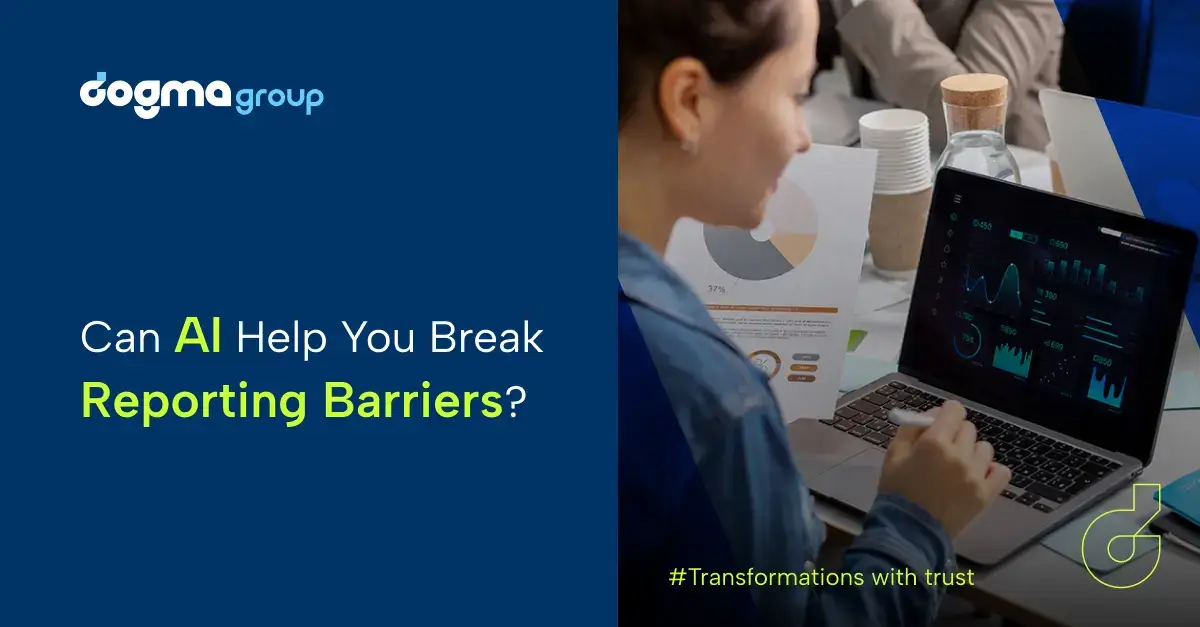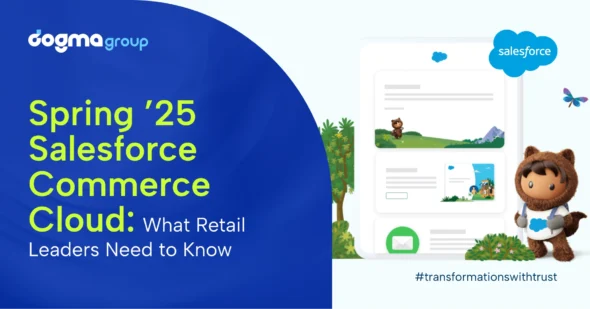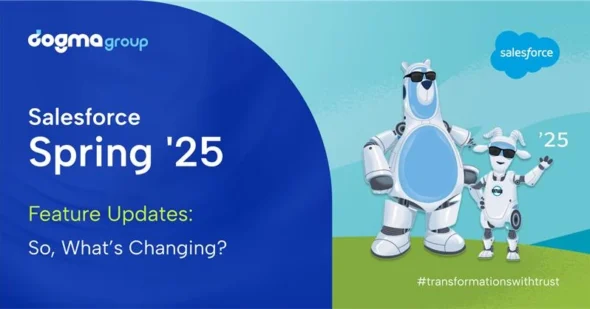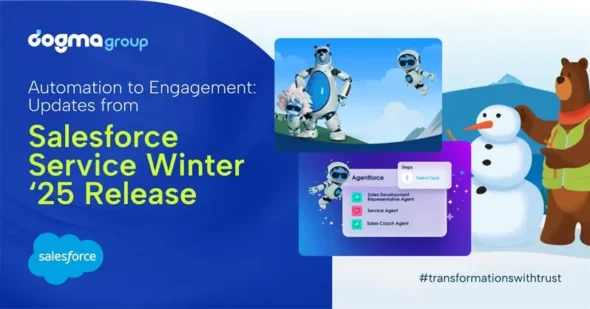Wondering if AI can overcome your reporting barriers? Trying to find ways to leverage AI for business intelligence and analytics? AI can definitely help you breakdown reporting barriers and provide you with advanced analytics. But there are few things about AI reporting that you need to know first!
With rapid induction of AI in workplaces, companies are racing to find new smarter ways to leverage AI to enhance efficiency and productivity in several key areas of their business. And data reporting is no exception!
Traditionally, reporting has always been a time-consuming and error-prone process. Manual data entry, complex calculations, multiple sources and formats, and changing regulations can create a range of challenges for accuracy, efficiency, and compliance. But AI is fast transforming the way organisations make decisions and plan strategies, leveraging smart data analytics and intelligence reporting for informed decision-making.
So, how can AI help you overcome these challenges and enhance your organisational reporting process? Here are some ways that AI can transform your reporting and add value to your business.
1. Automated Data Collection, Integration, and Analytics
Traditionally, data management processes involved repetitive and cumbersome manual tasks. From data collection and validation to data synchronisation and analysis, all required hours of manual effort, which were not entirely error-free.
But AI is not only automating these labour-intensive tasks to save time and ensure data integrity, but it is also helping organisations uncover hidden patterns, correlations, and opportunities within their data. From automated data capturing and filtering to data sharing and consolidation, the AI-powered digital solutions today can handle everything pertaining to data management. Additionally, using machine learning (ML) and advanced tailored algorithms, AI can generate and share real-time or scheduled reports automatically without ever needing a manual intervention, while also ensuring accuracy and saving significant time and costs.
On the one hand, you can streamline data management and boost efficiency with AI tools, while on the other, you can automatically detect data anomalies and inconsistencies. This goes a long way to helping you create a decision-making process driven by AI-powered business intelligence and real-time analytics.
2. Interactive and Improved Reporting
Thanks to AI, business reports are now becoming more interactive and accessible through self-service.
No more stacks of papers, and no more static information that’s too tricky to navigate. Instead of relying on IT teams to decipher complex data, you can use AI-powered tools and functionalities to find the right information and gain the meaningful insights you need.
And it all happens digitally on the device you prefer! Say, you want the inventory status report across all your warehouses. Or you want sales reports comparison between multiple regions. The AI can not only fetch those data for you but also detect hidden patterns and opportunities you may miss. The possibilities for your unique reporting needs range from custom reports at the tip of your fingers to bespoke dashboards that are interactive and accessible.
Additionally, AI-enabled reporting tools do not just retrieve the information you need. They also learn and improve their performance. And that’s another big win for those using AI-driven reporting! With machine learning algorithms and chatbots trained in natural language models, you will have dual benefits.
First, the workflow will improve drastically with an efficient reporting that is quick and involves fewer manual interventions. Second, the AI will continue to learn about your reporting preferences and improve its results. Considering how fast AI can learn and adapt, you will see improved reporting capabilities in no time, thus, enabling you to be highly vigilant and responsive to ongoing changes.
3. Advanced Predictive and Prescriptive Analytics
Businesses need to go beyond descriptive analytics if they truly want to drive growth today and AI can help them do just that!
Leveraging ML and automated data mining, modern AI reporting tools offer predictive and prescriptive analytics to transform your descriptive analytics into actionable insights and profitable decisions.
First comes AI-driven predictive analysis, which identifies hidden correlations, patterns, and trends to help you peek into the possible outcomes. With this kind of analytics, you can get better predictions so that you can easily understand what will happen if the existing scenario continues or if you take a certain decision. You can further augment predictive analytics by letting AI monitor and anticipate changes in the market and consumers and fine-tune your operations proactively to adapt and grow.
Then comes prescriptive analytics. It provides specific recommendations for unique future scenarios using your data and complex ML algorithm. When powered by AI, this form of analytics can help you look deeply into the whats and whys of a possible future outcome. With an ability to evaluate multiple alternative decisions and their probable results, you can make your decisions more favourable and strategic. You can also time them perfectly to benefit from the market shifts and new opportunities as they emerge.
4. Real-Time Analytics and Advanced Visualisation
The new AI algorithms are designed for effortless data analysis and visualisations in real time. They use machine learning (ML) and Natural Language Processing (NLP) to generate dashboards with real-time insights that enable faster and smarter decision-making. This allows take a quick peak into visual information and immediately respond to shifting market conditions, ensuring sustained growth in the wake of uncertainty.
With AI-powered visualisations, businesses can not only remain proactive and responsive with real-time insights, but they can also discover new marketable opportunities. For instance, to help businesses fully leverage the AI for reporting, popular reporting solutions like Power BI and Tableau have already incorporated AI. Power BI has Dynamics 365 Copilot and Tableau has embedded Einstein. Both solutions come with powerful AI analytics features, such as deep learning, and machine learning, to drive quicker query results.
The AutoML feature in Power BI effortlessly trains analysis models, while the Quick Insights uncovers correlations, patterns, and insights. Conversely, Tableau’s Insight Advisor generates context-aware suggestions and presents reports in captivating graphics.
What’s Next?
Businesses worldwide are now starting to use AI tools to enhance their reporting and decision-making process. With so many benefits in store, it would be unwise to harness the power of AI to gain digital agility and a competitive edge over your competitors. Plus, you can be vigilant and responsive to new market disruptors. But AI is moving into the workplace at such an unprecedented pace that you might find it tricky to fully leverage AI for optimal growth. To find the right resources and the right AI experts you can trust for your AI journey, feel free to reach out to us.





